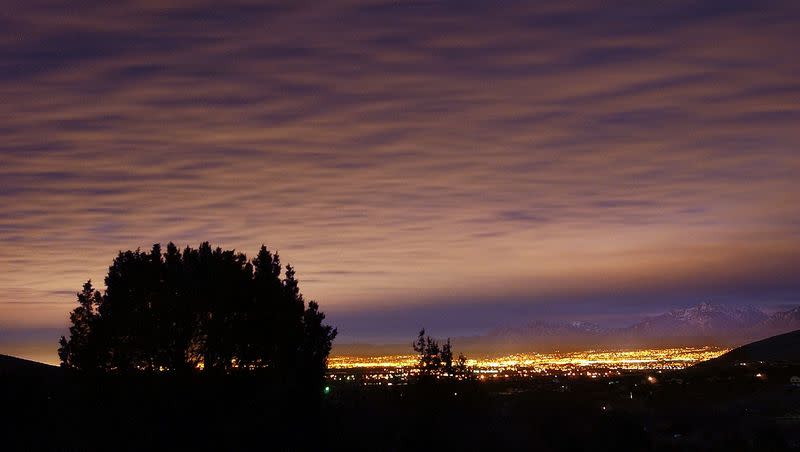Where and when to see the Leonid meteor shower in Utah this weekend

The Leonid meteor shower will streak across the sky this weekend, with peak viewing opportunities on Friday and Saturday.
Meteors are expected to streak across the sky at a rate of about 15 meteors per hour, reported The New York Times.
And there’s a chance that the rate will be even faster, said Sharon Morsink, a professor of physics at the University of Alberta, to CNN.
Related
What time can I see the Leonid meteor shower?
The Leonid meteor shower has been active for the past month and will remain active until Dec. 2, but it will be the brightest just past midnight on Friday and into Saturday morning, according to the American Meteor Society.
It will be an especially good night for viewing on Friday because the moon will only be 23% full, making for a darker sky to illuminate the passing meteors, per the society.
Where will the Leonid meteor shower be visible?
Morsink told CNN that the best place to see the Leonid meteor shower is by looking for the constellation Leo, the shower’s radiant, or point of origin in the night sky.
In relation to the Big Dipper, Leo the lion is located on the bottom side of the pan, per EarthSky. The easiest way to spot the lion is to look for a star pattern that looks like a backward question mark, called the “sickle” of the constellation.
To get the best glimpse at the Leonid meteor shower, you should get out of the city and find darker places away from light pollution, per CNN.
“The most important thing is to get away from light pollution,” Morsink told CNN. “You can still see some meteors if you’re in the city, but you’re not going to see anywhere near the number that you get to see if you get out of the city.”
Related
Best places to watch the Leonid meteor shower in Utah
Utah has some of the “finest dark skies in the world” and makes for excellent spots for night-sky viewing, according to visitutah.com, a Utah travel website.
The best places to stargaze or see meteor showers like Leonid in northern Utah, according to Visit Utah, are:
North Fork Park.
Antelope Island.
East Canyon State Park.
Rockport State Park.
Jordanelle State Park.
Timpanogos Cave National Monument.
In southern Utah, the best places to stargaze include:
Fremont Indian State Park and Museum.
Goblin Valley State Park.
Capitol Reef National Park.
Dead Horse Point State Park.
Zion National Park.
A full map of Utah’s best stargazing spots can be found at visitutah.com.
How rare is the Leonid meteor shower?
The Leonid meteor shower occurs every year at about this time but the meteors are not always visible because of the brightness of the moon, reported CBS News.
Every 33 years or so, CBS reported, the shower turns into a meteor storm with more than 1,000 meteors streaking the sky, almost making it look as if light is raining from the sky.
The American Meteor Society predicts that the next best displays of the shower won’t happen until 2031 and 2064, but that there won’t be a meteor storm until 2099.
Related

